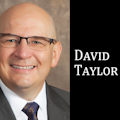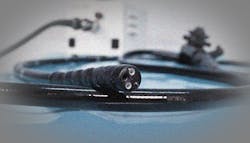In 1975, the first endoscopic clip (also known as the endo-clip or hemo-clip) was used for the treatment of gastrointestinal bleeding.1 Since then, endoscopic clipping has become a common practice among endoscopists.
Clips used today are metallic devices that are available in various models and sizes. Most clips are rotatable, with reopening and reclosing capabilities that allow the endoscopist to produce mechanical compression without causing injury to surrounding tissue—thus, achieving hemostasis (the stopping of blood flow) by clamping a vessel and/or approximating the edges of a lesion and allowing closure of gastrointestinal perforations. Clips are introduced via the working channel of the endoscope; larger clips are mounted onto the distal tip of the endoscope, which helps enable precise deployment.
Updated recommendations from ANSI/AAMI ST91:2021 Flexible and semi-rigid endoscope processing in health care facilities highlight the importance of meticulous manual cleaning and, more specifically, diligent inspection of endoscopes and their internal channels. External inspection is a visual process that can best be accomplished using lighted magnification.
Internal inspection requires the use of a borescope, which helps the technician performing the inspection to visualize internal aspects of the device’s channel lining to identify cracks, voids, scratches and other damage as well as retained foreign objects.
Retained clips prompt improved practices
At a large quaternary health system in the western U.S., a busy endoscopy department performed a 12mm endoscopic mucosal resection, with hemostasis obtained using endoscopic clips. Following the procedure, the SP technician processing the endoscope noticed a single clip exiting the distal end during the brushing phase of cleaning. The technician completed manual cleaning and documented the clip finding. The endoscope passed cleaning verification, was high-level disinfected in an automated endoscope reprocessor, and was dried, packaged and stored for later use, with each of these processes documented in the appropriate logs.
A few days later, the same endoscope was used on a different patient during a routine diagnostic screening procedure in which no clips were used. After the procedure, point-of-use treatment was initiated, and the endoscope was sent to the reprocessing area for thorough cleaning and high-level disinfection (HLD). While brushing the endoscope in the decontamination area, the technician noticed two additional clips coming from the distal end of the endoscope. Management was alerted, and the endoscope underwent HLD and was removed from service. The management team then notified the senior administrator and regulatory and infection prevention professionals.
It is important to note that the endoscope in question, along with the entire fleet of endoscopes in the health system’s inventory, underwent thorough, meticulous borescope inspection. The first inspection was performed by the endoscopy supervisor, and additional inspection was performed by the SP manager. No clips were found in any of the endoscopes’ channels during inspection, and the endoscopes were recleaned and underwent HLD.
Within 24 hours, a new-and-improved protocol was developed for routine borescope inspection of the health system’s endoscope inventory. A multidisciplinary team that consisted of the endoscopy technician supervisor and leaders from Infection Prevention, Regulatory and Endoscopy departments convened and performed a root cause analysis. All steps in the process were discussed openly, and each party provided its perspective and guidance during the investigation, which included patient notification and the development of steps to avoid similar problems in the future.
The investigation did not determine why so many clips were retained in one endoscope or why brushing with an appropriately sized brush did not dislodge them during cleaning. Staff members were briefed about the situation and its risk to patient safety. Inservice education was scheduled to ensure all staff members who used endoscopy clips were knowledgeable about their use (including their loading, mounting and deployment) and were also accountable for identifying the number of clips used in a procedure to help prevent accidental retention of the clips following the procedure.
In the past, the department had experienced a retained stent that deployed intra-luminally in a duodenoscope; the retained stent was discovered during borescope inspection by the duodenoscope manufacturer when the device was sent for routine service. At that time, the manufacturer implemented a quality control measure during cleaning where a larger pull-through brush was used after brushing with the manufacturer-recommended brush (the rationale was that the longer pull-through brush would not be able to pass through a deployed stent). It was decided by the health system that this would be a prudent practice to implement for all of its channeled endoscopes undergoing reprocessing because any retained clips would become dislodged or would stop the pull-through brush, thereby alerting reprocessing staff to a potential problem.
Conclusion
It is important for today’s facility and SP leaders to follow recommendations for use of endoscopes, their accessories and processing equipment; document the number of clips used during a procedure (and ensure they are accounted for afterward); consistently use borescopes and lighted magnification to more thoroughly inspect endoscopes; and document all reprocessing steps to ensure the devices are cleaned and high-level disinfected (or sterilized when appropriate) to help ensure safe patient care and positive procedural outcomes.
Reference
1. Hayashi I, Yonezawa TM, Kuwabara T, Kudoh I. “The study on stanch clips for the treatment by endoscopy.” Gastroenterol Endosc. 1975;17:92–101.
About the Author

David Taylor
Principal, Resolute Advisory Group LLC
David L. Taylor, MSN, RN, CNOR is an independent hospital and ambulatory surgery center consultant and the principal of Resolute Advisory Group LLC, in San Antonio, Texas.
